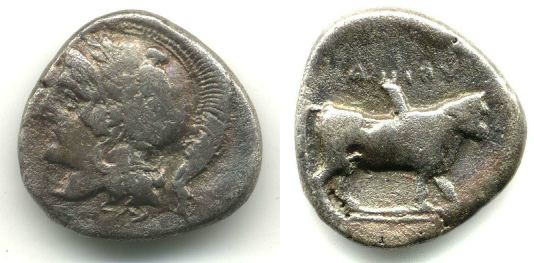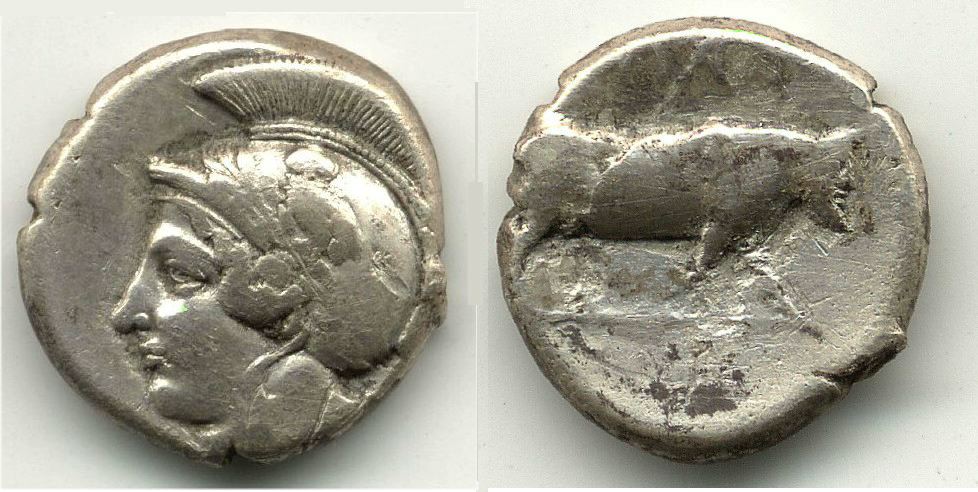
Athena left / Bull right
Rutter H48; Oxford 64

Athena left / Bull right
Rutter H36; Ans 260, Londra BMC 1
| Stateri D/ Athena a sinistra o destra, elmo attico con cimiero e decorato con corona di ulivo. Civetta sull'elmo. I capelli sporgono in basso dall'elmo e sono raccolti dietro il collo. R/ Toro androprosopo passante destra o sin.; sopra etnico in varie forme. |
Staters Obv. Athena left or right, Attic helmet. The helmet is crested, decorated with olive-wreath, and adorned with an owl. The hair emerges below the helmet and is bunched behind the neck. Rev. Man-faced bull walking r. or l. Ethnic above in various forms |
 |
Atena sinistra / Toro destra Athena left / Bull right Rutter H48; Oxford 64 |
 |
Atena sinistra / Toro destra Athena left / Bull right Rutter H36; Ans 260, Londra BMC 1 |
| La posizione della città non è nota. Alcuni
studiosi propongono lo stesso posto o le vicinanze di Nola. La grafia del nome è incerta. Sulle monete sono riportate molte grafie diverse, sia in alfabeto Osco che Greco. Le monete noto didrachme campane di ca. 7,4-7,5 g, emesse nel periodo 400-335 A.C. Al diritto i tipi sono: a) Athena con elmo Attico b) Ninfa di profilo c) Hera Lakinia di fronte Il rovescio mostra sempre il toro androprosopo. |
The site of the city is not known. Some scholars suppose in
the same place or near of nowdays Nola. There are many different forms of the ethnic on the coins, written both in Oscan and Greek letters. Coins are struck following the Campanian standard of about 115 gr (7.5 g), ranging in date from circa 400-335 B.C. At obverse we have: a) Athena in crested Attic helmet b) Head of Nymph in profile c) Head of Hera Lakinia to front The reverse shows always the Campanian bull. |
WildWinds.com: Hyria
Magna Graecia Coins of Hyria